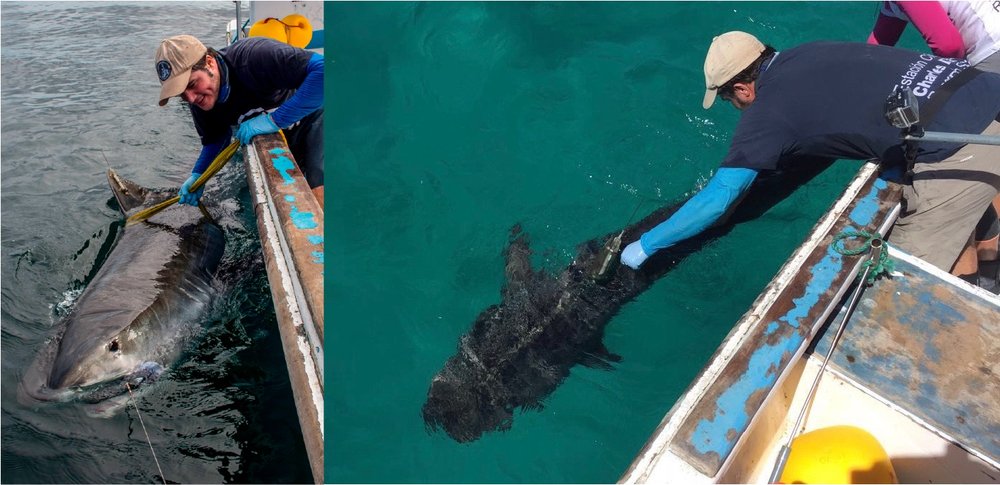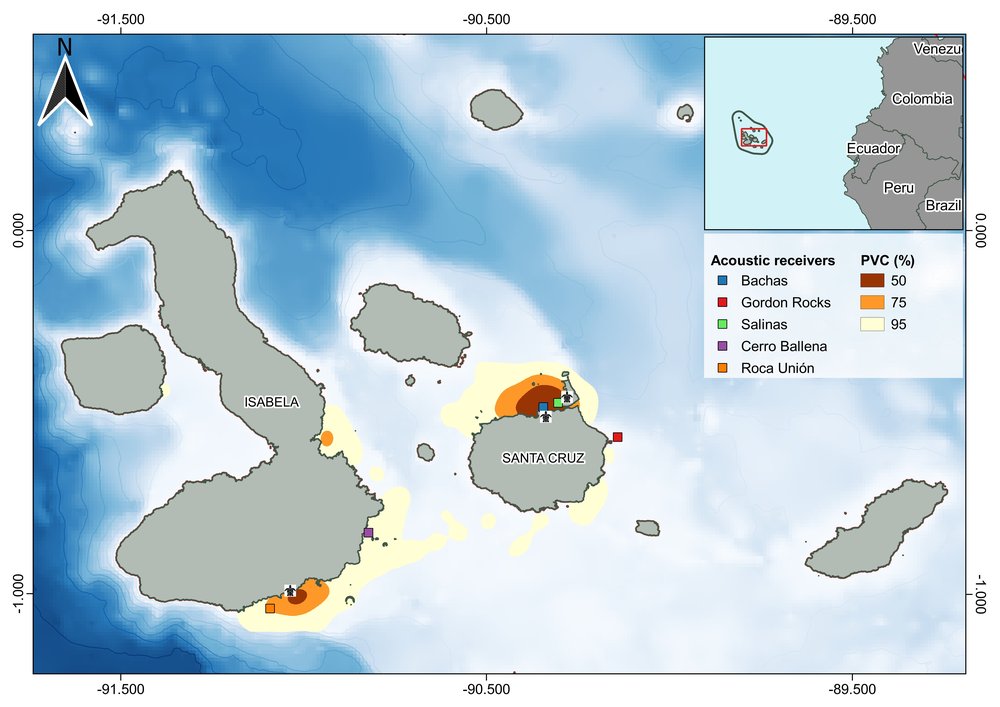
-- Press release -- Green turtles and sea lions are the main prey for large tiger sharks in the Galapagos Marine Reserve (GMR), shows a new study by a group of scientists from the Charles Darwin Foundation (CDF) and the Galapagos Science Center of the University San Francisco de Quito, along with The Galapagos National Park Directorate. This study, the first to examine the tiger shark (Galeocerdo cuvier) diet within the GMR, which also found that adolescent tiger sharks prefer squid and pelagic fish.
Sharks are apex-predators. They are at the top of the food chain, which in terns mean that by having them at the top they will maintain a healthy marine ecosystem, controlling the size and dynamics of lower prey populations in the food network.
"Studying the diet of these apex-predators not only helps determine their favourite food, but also how the marine ecosystems naturally work. This makes sharks an essential part of keeping marine ecosystems healthy," says Dr. Pelayo Salinas-de-León, Principal Investigator of the CDF´s Shark Ecology Project.
Sharks are of great resource for the local economy in Galapagos. 37% of the local workforce work in the marine tourism industry, which relies heavily on shark sightings. It is estimated that, on average, each living shark contributes $360,105 per year to the island economy.
Sharks represent one of the most endangered groups of marine vertebrates on the planet, with an average annual catch of 100 million individuals a year globally between 2000 and 2010. Few places on the planet still host healthy shark populations. Due to the protection provided by the Marine Reserve, the Galapagos are one of the few places in the world where shark populations are still in good condition.
How do you study a shark’s diet?

To study the diet of tiger sharks, scientists looked at stable isotopes: A chemical signal that can trace what the sharks have eaten in the last 3 to6 months. This is done by taking muscle samples from the tiger sharks captured north of Santa Cruz Island and southern Isabela Island (Galapagos Archipelago). "Studying shark feeding can be difficult using traditional methods, such as analysis of stomach contents or direct observations. For this reason, the method used in this study is the analysis of stable isotopes. An alternate technique that is less invasive and provides more general information about sharks´ diet and position in the food chain," says Dr. Diego Páez-Rosas, an expert at Galapagos Science Center.
Tiger sharks are permanent residents of the Galapagos

As part of this research, scientists also studied the movements of tiger sharks within the GMR. For this, two types of technology were used: satellite and acoustic transmitters. Satellite markings are placed on the dorsal fin and follow shark movements constantly, similar to when using maps on a cell phone. While the sound markings only indicate whether or not sharks have been present in a particular area, as their presence is registered at listening stations located at different points of the GMR.
"After analysing the brand data, we found that sharks remain inside the Galapagos Marine Reserve for more than 90% of the time they were tracked. In the Galapagos they show a high tendency to stay around nesting areas of green turtles" says Denisse Fierro Arcos, scientist of the CDF shark ecology project.
“The abundance of food along with adequate environments could be the reason why Galapagos tiger sharks move over shorter distances compared to the movements of tiger sharks in other parts of the world," adds Fierro Arcos.
This study shows that large Marine Protected Areas, where ecosystems are in good conservation and have abundant resources, can be effective in protecting species that are normally highly migratory, such as Tiger sharks.
The full article was published in the scientific journal Plos One, on 20 September 2019. It can be downloaded here
Two educational videos about tiger sharks in the GMR are available on the Charles Darwin Foundation's YouTube channel:
This study was made possible by financial support from IWC Schaffhausen, The Helmsley Charitable Trust and National Geographic Pristine Seas, and the logistical support of fisherman Don Nelson Ibarra and the crew of the M/V Ocearch.




